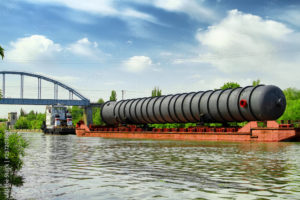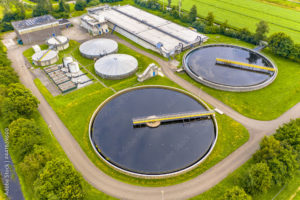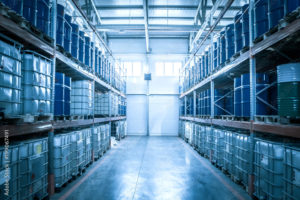Best Chemical Supplier for Paper and Pulp Industry in Indonesia
Process Flow Chart from Paper and Pulp Manufacturing Plant

Here is the simplified process flow chart for a paper and pulp manufacturing plant. This chart includes the key stages: Wood Chipping, Pulping, Bleaching, Papermaking, and Finishing, in a clear and straightforward manner. It visually represents a linear progression from raw material input to the finished paper product, making it easy to understand and follow. The style is basic and uncluttered, suitable for educational purposes or for those new to the topic.
The Essential Chemistry of Papermaking: An In-Depth Guide
Introduction
The art of papermaking has evolved significantly since its inception over two millennia ago in ancient China. Today, it combines traditional practices with advanced chemistry, making it a cornerstone of modern civilization. This guide delves into the crucial role chemicals play in papermaking, enhancing not just the quality and efficiency of paper production but also ensuring sustainability and environmental friendliness.
Section 1: The Basic Chemistry of Papermaking
Papermaking is a process that transforms pulp into paper, involving mechanical and chemical processes. Chemicals are indispensable in this transformation, impacting the paper’s properties like strength, color, and resistance to water. Understanding these chemical interactions is vital for producing various paper grades, from writing paper to packaging materials.
Section 2: Major Chemicals Used in Papermaking
2.1. Pulping Chemicals
Sodium Hydroxide (NaOH)
Sodium hydroxide, a key player in the Kraft process, breaks down lignin, separating it from cellulose fibers. This chemical is crucial for producing strong, durable paper and is renowned for its efficiency in pulp yield.
Sodium Sulfide (Na2S)
In conjunction with NaOH, sodium sulfide enhances the pulping process, increasing pulp strength and quality. It aids in breaking down lignin more effectively, resulting in superior pulp.
Calcium Oxide (CaO)
Also known as quicklime, calcium oxide plays a pivotal role in regenerating chemicals used in the pulping process. It’s instrumental in the recovery of pulping chemicals, making the process more sustainable.
2.2. Bleaching Agents
Chlorine Dioxide (ClO2)
Chlorine dioxide, replacing harmful elemental chlorine, significantly reduces environmental impact. It’s highly effective in whitening pulp while minimizing the release of toxic dioxins.
Hydrogen Peroxide (H2O2)
Hydrogen peroxide is a cornerstone in ECF (Elemental Chlorine Free) and TCF (Totally Chlorine Free) bleaching processes. It’s favored for its eco-friendliness and ability to enhance paper brightness without compromising strength.
2.3. Sizing Agents
Alkyl Ketene Dimer (AKD)
AKD imparts water resistance to paper, crucial for packaging and label applications. Its hydrophobic properties ensure durability in various conditions.
Rosin
A traditional sizing agent, rosin, has been used for centuries. It provides moderate water resistance and is appreciated for its natural origin.
2.4. Strength Additives
Cationic Starch
This additive boosts the paper’s strength, particularly vital for high-quality fine papers. It enhances the bonding between fibers, thus improving the paper’s overall integrity.
Polyacrylamide (PAM)
PAM is widely used to improve paper’s dry strength, essential for packaging and industrial papers. It also aids in the paper production process by enhancing fiber bonding.
2.5. Retention Aids
Polyethyleneimine (PEI)
PEI is crucial in enhancing the retention of fines and fillers, thus improving paper quality and reducing waste. It’s highly effective in optimizing the papermaking process.
Bentonite
This natural clay is used in papermaking for its synergistic effects with other chemicals. It aids in retention, improving paper quality and efficiency.
2.6. Deinking Chemicals (For Recycled Paper)
Sodium Silicate
In the recycling process, sodium silicate plays a vital role in deinking and alkalinity control. It ensures the efficient removal of ink from recycled fibers.
Surfactants
Surfactants assist in detaching ink from fibers during the recycling process. They are pivotal in producing high-quality recycled paper.
Section 3: Environmental and Safety Aspects
The paper industry faces challenges regarding environmental sustainability. The shift towards eco-friendly chemicals, like TCF bleaching agents, signifies the industry’s commitment to reducing its ecological footprint. Safe handling and use of these chemicals are paramount for worker safety and environmental protection.
Section 4: Future Trends and Innovations
The future of papermaking lies in innovative chemicals and processes that balance quality, efficiency, and sustainability. Bio-based chemicals and closed-loop recycling processes are among the promising developments shaping the future of this industry.
Conclusion
Chemicals are at the heart of modern papermaking, playing a critical role in determining the quality, efficiency, and environmental impact of paper production. As the industry evolves, the balance between these aspects remains a central focus,
Paper and Plup Chemical Products List
Here is a list of major chemicals commonly used in the paper and pulp industry along with their applications or uses:
- Wood pulp: Raw material for paper production.
- Bleaching agents (such as chlorine dioxide, hydrogen peroxide, and sodium hypochlorite): Used to remove impurities and brighten the pulp.
- Sodium hydroxide: Alkaline chemical used in the pulping and bleaching processes.
- Sulfuric acid: Acid used in the pulping and bleaching processes.
- Calcium carbonate: Filler used to improve brightness and opacity in paper.
- Rosin: Natural resin used as a sizing agent in paper manufacturing.
- Alum: Used as a retention aid and sizing agent in paper production.
- Starch: Used as a binder and surface sizing agent in paper manufacturing.
- Titanium dioxide: Pigment used to enhance whiteness and opacity in paper.
- Cationic starch: Used as a retention aid and strengthening agent in papermaking.
- Polyacrylamide: Used as a flocculant and retention aid in the papermaking process.
- Sodium silicate: Used as a dispersing agent and retention aid in paper production.
- Dyes and pigments: Used to add color and enhance printability in paper.
- Kaolin clay: Filler and coating pigment used to improve smoothness and ink receptivity.
- Sizing agents (such as alkyl ketene dimer and ASA emulsion): Applied to paper to control water absorption and improve print quality.
- Defoamers: Used to control foam during papermaking.
- Wet strength agents: Enhance the strength of paper when wet.
- Dry strength agents: Improve the strength of paper when dry.
- Retention aids: Aid in the retention of fine particles during paper formation.
- Biocides: Prevent microbial growth and control the formation of slime in the papermaking process.
- Optical brighteners: Chemicals that improve the whiteness and brightness of paper.
- Dispersants: Improve the dispersion of fibers and fillers in the papermaking process.
- Chelating agents: Prevent the negative effects of metal ions on paper properties.
- Enzymes: Used for fiber modification and improving drainage and pulp properties.
- Sodium borate: Buffering agent used in papermaking.
- Styrene-butadiene latex: Used as a binder in paper coatings.
- Sodium lignosulfonate: Used as a dispersing agent and water reducer in paper production.
- Peroxide stabilizers: Used to stabilize hydrogen peroxide used in bleaching.
- Sodium metabisulfite: Antioxidant used in pulp and paper bleaching.
- Sodium perborate: Bleaching agent used in the production of recycled paper.
- Fixatives: Used to set dyes and pigments in paper.
- Quaternary ammonium compounds: Used as antistatic agents and softeners in paper production.
- Wetting agents: Aid in the wetting and penetration of chemicals during papermaking.
- Pitch control agents: Prevent the buildup of resinous materials in the papermaking process.
- Retention aids: Aid in the retention of fibers, fillers, and fines during paper formation.
- Defoamers: Control foam generated during various papermaking stages.
- Dispersants: Aid in the dispersion of fillers and additives in the papermaking process.
- Brighteners: Enhance the brightness and whiteness of paper.
- Antioxidants: Prevent degradation of paper from oxidation.
- Chelating agents: Control the presence of metal ions in the paper pulp.
Please note that the specific chemicals and their uses may vary depending on the specific papermaking processes and applications within the pulp and paper industry.








